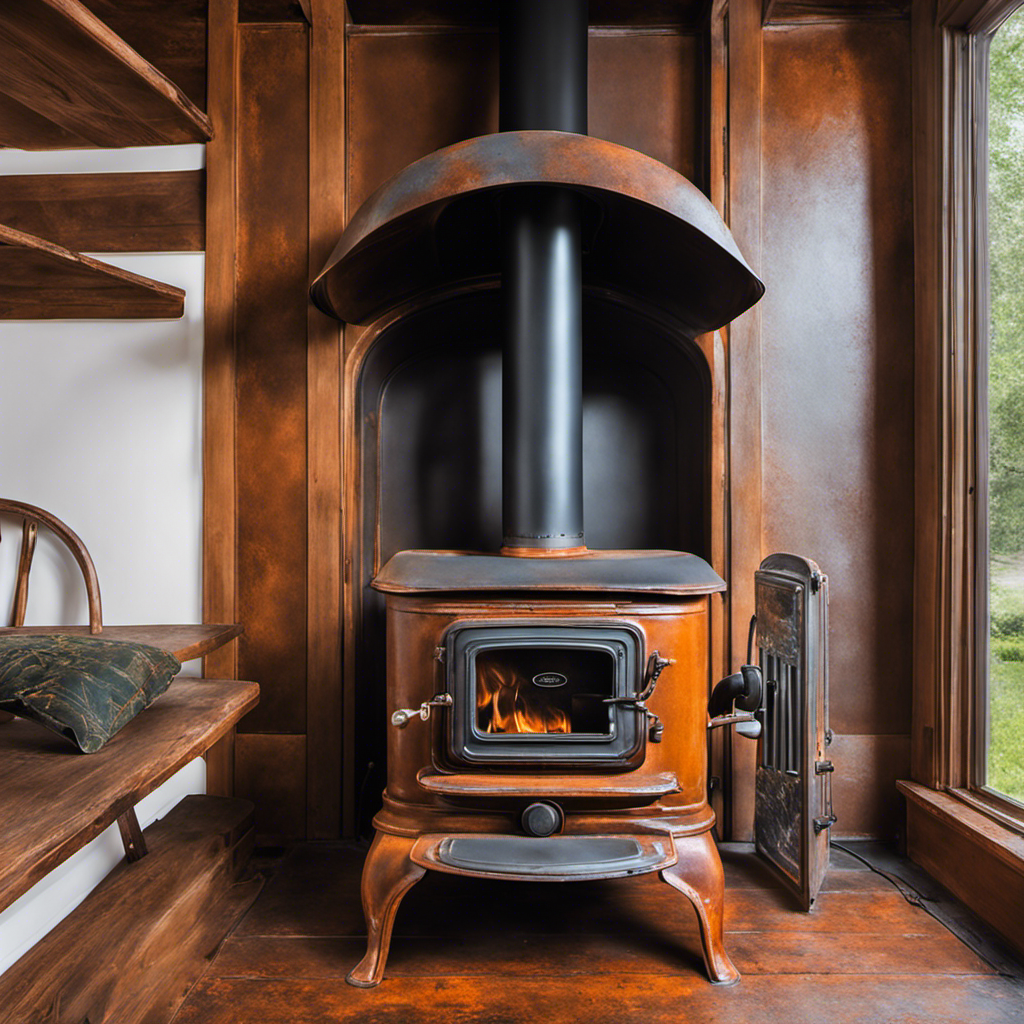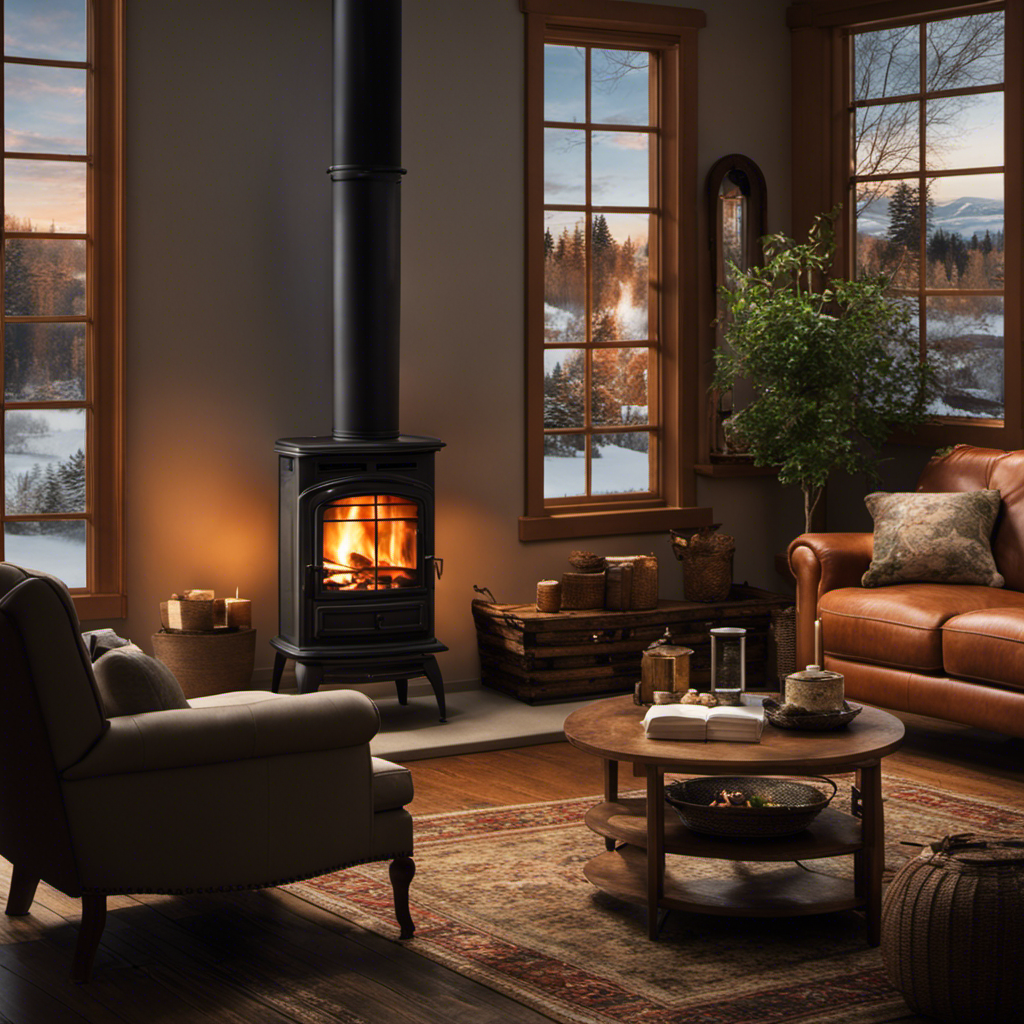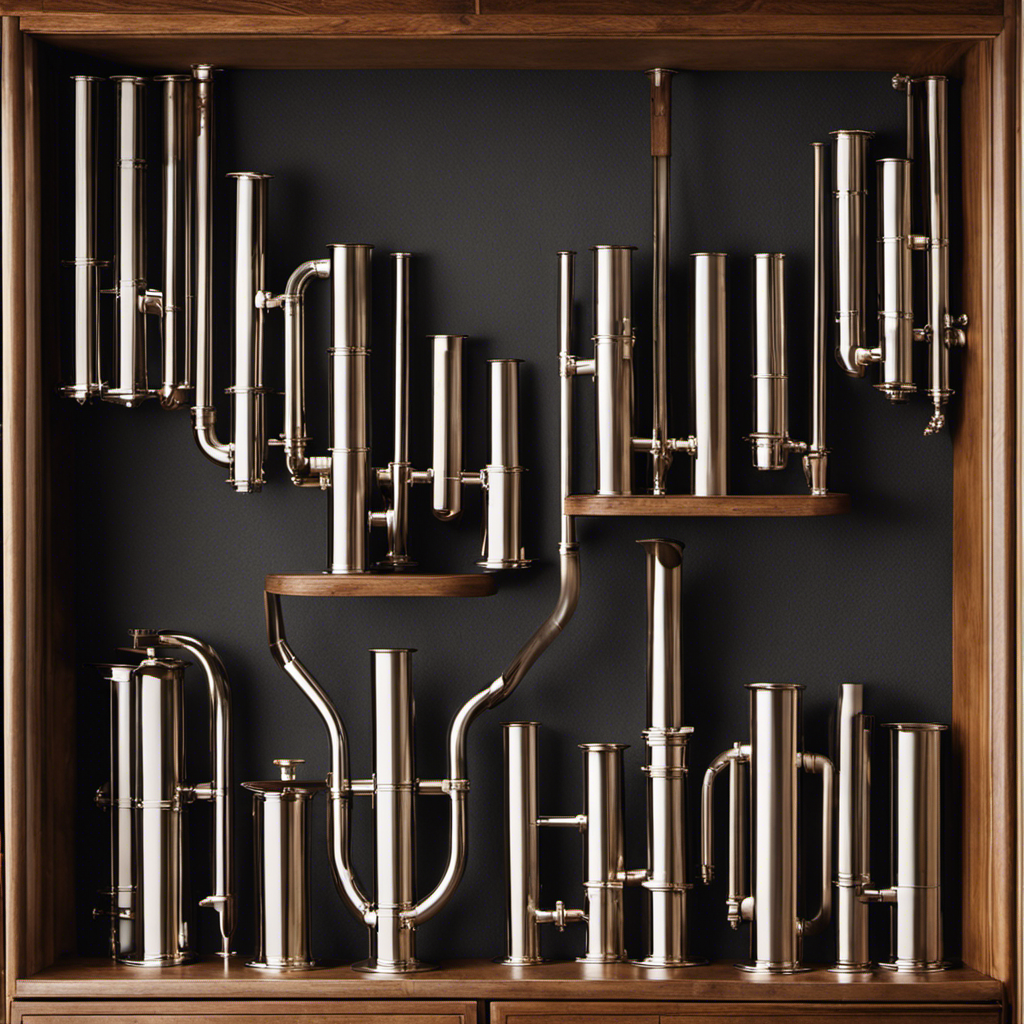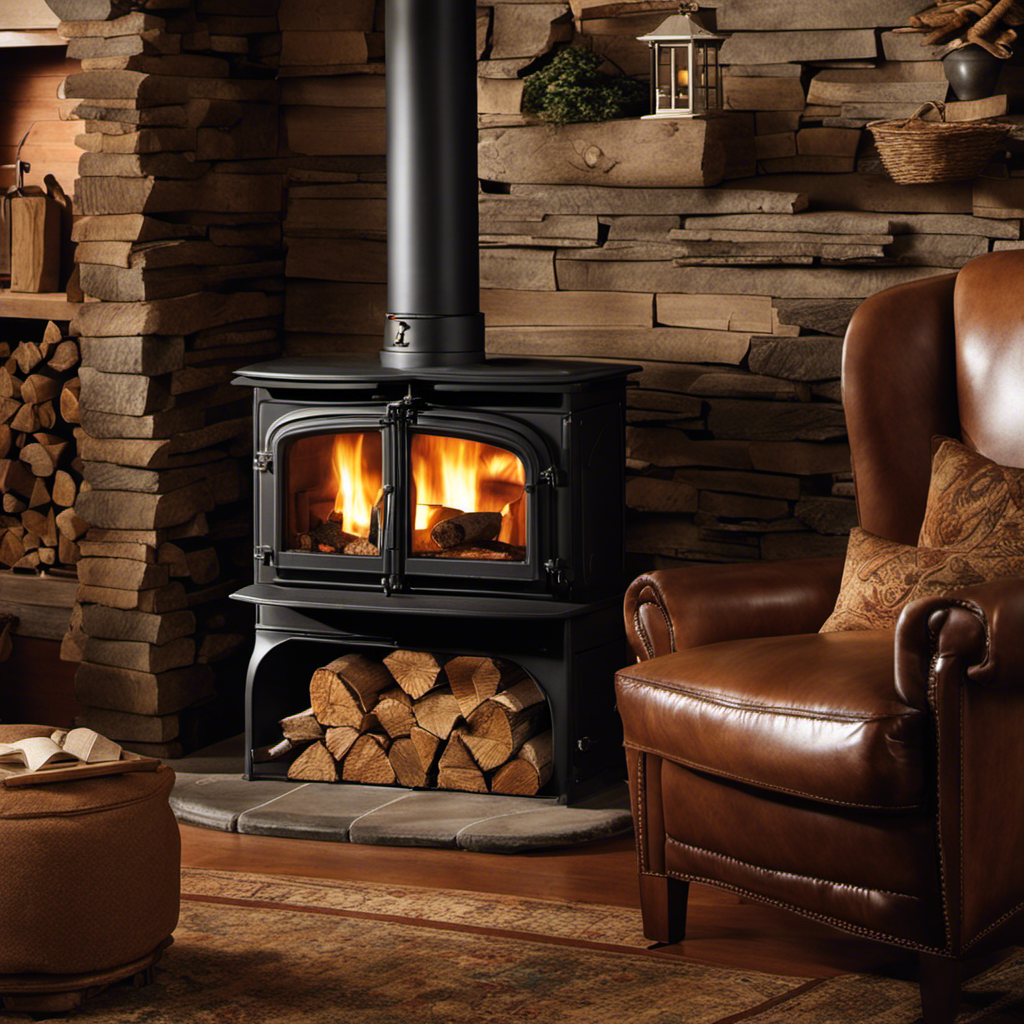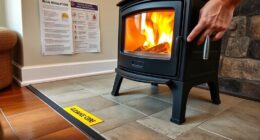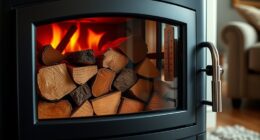Hello everyone! Have you ever come across an old wood stove that is completely rusted and wondered how to restore it? No need to fret, because I have the perfect solution for you.
In this article, I’ll guide you through the process of restoring that beautiful piece of history. From assessing its condition to removing pesky rust, we’ll cover it all.
So grab your tools and get ready to transform that rusty relic into a shining centerpiece for your home. Let’s dive in!
Key Takeaways
- Assess the overall condition of the wood stove and inspect for rust, corrosion, and damage.
- Use appropriate techniques such as wire brushing or sanding to remove superficial rust.
- For structural damage, consider more extensive repairs.
- Choose high-quality restoration products and finishes to protect and enhance the wood stove’s surface.
Assessing the Condition of the Wood Stove
I need to evaluate the overall condition of the wood stove before deciding on the best restoration approach. When assessing the damage, I carefully inspect every part of the stove, from the exterior to the interior.
I look for signs of rust, corrosion, and any other visible damage. It’s important to determine the extent of the damage so that I can choose the appropriate restoration method. If the rust is superficial, I may be able to remove it with a wire brush or sandpaper.
However, if the rust has penetrated the metal or caused structural damage, more extensive repairs may be required. By thoroughly evaluating the damage, I can make an informed decision on the best restoration method for the vintage wood stove.
Preparing the Wood Stove for Restoration
To properly prepare the wood stove for restoration, I’ll clean the exterior and remove any debris, and then begin the process of removing the rust. When it comes to cleaning the exterior, I’ll use gentle cleaning techniques to avoid damaging the surface. A mixture of warm water and mild dish soap is usually sufficient to remove dirt and grime. It’s important to wear gloves and protective eyewear to ensure safety during this process.
After cleaning, I’ll inspect the stove for any loose or damaged parts that may need to be repaired or replaced. Once the exterior is clean, I’ll focus on removing the rust. This can be done using sandpaper or a wire brush, making sure to wear a mask to avoid inhaling any particles. Safety precautions are crucial when working with rust, as it can be harmful if ingested or inhaled.
Removing Rust From the Wood Stove
The first step in removing rust from the wood stove is using a wire brush to scrub away the stubborn rust particles. This technique helps to loosen and dislodge the rust, making it easier to remove. Once the loose rust has been brushed away, it is important to treat the remaining rusted areas with a rust dissolver solution. This solution helps to break down the rust and prepare the surface for further restoration. After applying the rust dissolver, it is crucial to thoroughly clean and dry the surface before moving on to the next step. To prevent future rust growth, it is recommended to apply a rust-inhibiting primer or paint to the restored surface. This provides a protective barrier against moisture and oxidation, helping to prolong the life of the wood stove.
| Rust Removal Techniques | Preventing Future Rust Growth |
|---|---|
| – Wire Brush | – Rust-inhibiting Primer |
| – Rust Dissolver | – Rust-inhibiting Paint |
| – Thorough Cleaning | – Regular Maintenance |
Restoring the Wood Stove’s Surface
When it comes to restoring the surface of a wood stove, there are a few key techniques and products to keep in mind.
First, it’s important to choose the right wood stove restoration products. Look for a high-quality cleaner specifically designed for removing dirt, grime, and old finishes from wood surfaces.
Additionally, consider using a wood stove refinishing technique such as sanding or stripping to remove any remaining stains or blemishes. Sanding can be done by hand or with a power sander, depending on the level of restoration needed.
Finally, apply a new finish or paint to protect and enhance the wood stove’s surface.
With the proper techniques and products, you can effectively restore your wood stove to its original beauty.
Sealing and Protecting the Restored Wood Stove
I’ve successfully sealed and protected the restored wood stove using a high-quality sealant. When it comes to choosing the right sealant for a vintage wood stove, there are a few factors to consider.
Firstly, you want to ensure that the sealant is heat-resistant, as the stove can reach high temperatures during operation. Look for sealants specifically designed for use on wood stoves or high-temperature applications.
Additionally, consider the type of finish you desire. Some sealants provide a glossy finish, while others offer a more matte look. It’s important to follow the manufacturer’s instructions when applying the sealant, ensuring proper ventilation and allowing enough time for it to cure.
Once sealed, it’s crucial to maintain the wood stove’s finish by regularly cleaning it with a soft cloth and avoiding abrasive cleaners that can damage the sealant. By choosing the right sealant and following these maintenance tips, you can ensure that your restored wood stove remains protected and looking its best for years to come.
Frequently Asked Questions
What Are Some Common Mistakes to Avoid When Assessing the Condition of a Vintage Wood Stove?
When assessing the condition of a vintage wood stove, common mistakes include overlooking hidden rust spots and underestimating the extent of damage. It’s important to thoroughly inspect the stove to ensure an accurate assessment.
Are There Any Specific Safety Precautions to Take When Preparing a Wood Stove for Restoration?
When preparing a wood stove for restoration, safety precautions are crucial. It is important to wear protective gear, such as gloves and a mask, and to ensure proper ventilation in the workspace.
Can I Use Household Cleaning Products to Remove Rust From a Wood Stove, or Do I Need Specialized Products?
I’ve found that using household cleaning products to remove rust from a wood stove can be hit or miss. While vinegar can work well, specialized rust removal products often provide more reliable and efficient results.
Is It Necessary to Sand Down the Entire Surface of the Wood Stove Before Restoring It, or Are There Alternative Methods?
There are alternative methods to sanding for restoring vintage wood stoves. You can remove rust from a wood stove without sanding by using specialized rust removers or vinegar and baking soda solutions.
How Often Should I Reapply the Sealant to Maintain the Restored Wood Stove’s Protection?
To maintain the restored wood stove’s protection, the reapplication frequency of sealant depends on its type. The best sealant options include heat-resistant ones like silicone or ceramic-based products. It’s important to follow the manufacturer’s recommendations for optimal results.
Conclusion
After assessing the condition of the vintage wood stove and preparing it for restoration, it’s time to tackle the rust.
With careful attention and the right tools, removing the rust becomes a straightforward process.
Once the rust is gone, restoring the wood stove’s surface is the next step, bringing back its original charm and beauty.
Finally, sealing and protecting the restored wood stove ensures its longevity and allows it to continue warming hearts and homes for years to come.
Growing up surrounded by the vast beauty of nature, Sierra was always drawn to the call of the wild. While others sought the comfort of the familiar, she ventured out, embracing the unpredictable and finding stories in the heartbeat of nature.
At the epicenter of every remarkable venture lies a dynamic team—a fusion of diverse talents, visions, and passions. The essence of Best Small Wood Stoves is crafted and refined by such a trio: Sierra, Logan, and Terra. Their collective expertise has transformed the platform into a leading authority on small wood stoves, radiating warmth and knowledge in equal measure.

